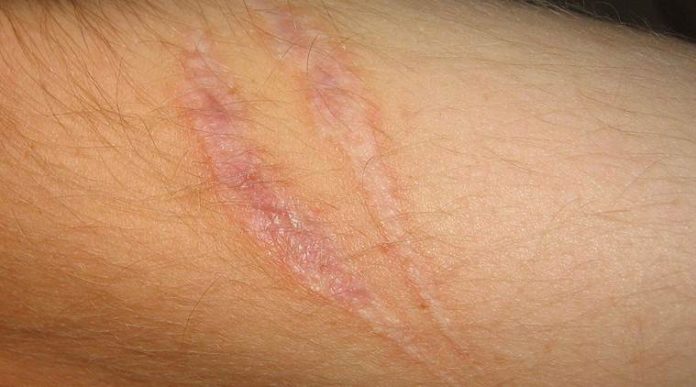
If tomorrow, women woke up and decided they really liked their bodies, just think how many industries would go out of business. — Dr. Gail Dines
The global scar treatment market was valued at $ 16,048.7 Million in 2015, and it is estimated to surpass $ 31,904 Million by 2022. — Persistence Market Research
Researchers at the Plikus Laboratory for Developmental and Regenerative Biology at the University of California, Irvine, and the Perelman School of Medicine at the University of Pennsylvania have developed an alternative healing process that manipulates wounds to heal as regenerated skin instead of scar tissue. The regeneration occurs by transforming myofibroblasts (the most common type of cell found in healing wounds, which only form scars) into adipocytes (fat cells that already exist in the skin, which do not form scars when wounds heals).
The secret is to regenerate hair follicles first and after that, claimed the researchers, the fat will regenerate in response to the signals from those follicles. Christian F. Guerrero-Juarez, a graduate student who worked closely on the project, explained:
“Typically, myofibroblasts, the primary cell type found in wounds, were thought to be incapable of becoming other cell types. However, our team found that wound myofibroblasts can efficiently and stably convert into new distinct cell types, specifically new adipocytes, which are the fat-laden cells necessary for healthy skin. Our study established that wounds with hair follicles produce the instructive factors that can reprogram myofibroblasts into adipocytes.”

Although the research is still in the early stages, researchers believe the new scar-free skin repair process would prevent scarring and give new skin a more natural look; address serious health conditions such as HIV; and make age-related deep wrinkles a thing of the past. Lead investigator Dr. George Cotsarelis, professor of dermatology at the University of Pennsylvania, noted:
“It’s highly desirable from a clinical standpoint, but right now it’s an unmet need. Our findings can potentially move us toward a new strategy to regenerate adipocytes in wrinkled skin, which could lead us to brand new anti-aging treatments.”
In modern times, scar removal treatments to get rid of acne scars, surgical scars or even keloid scars can cost between $100 and $5,000. In fact, a simple excision of the C-section scar alone can cost between $2,500 and $3,500.

However, using fat to help wounds heal would provide relief to countless patients, including plastic surgery patients and women who end up with a C-section scar, as marks left on the body due to intrusive operations would be barely visible to the untrained eye. Lead author Dr. Maksim Plikus, assistant professor of developmental and cell biology at the University of California, Irvine, added:
“In culture conditions, exposure of human fibroblasts derived from keloids, a type of skin scar, to either pure Bone Morphogenetic Protein [which instructs the myofibroblasts to become fat] or to human hair follicles is sufficient to drive their reprogramming toward new adipocytes. This shows that our findings from mice are translatable to humans.”
This article (Breakthrough: Researchers Develop Novel Way to Heal Wounds Without Scars) is a free and open source. You have permission to republish this article under a Creative Commons license with attribution to the author and AnonHQ.com.
Supporting Anonymous’ Independent & Investigative News is important to us. Please, follow us on Twitter: Follow @AnonymousNewsHQ




